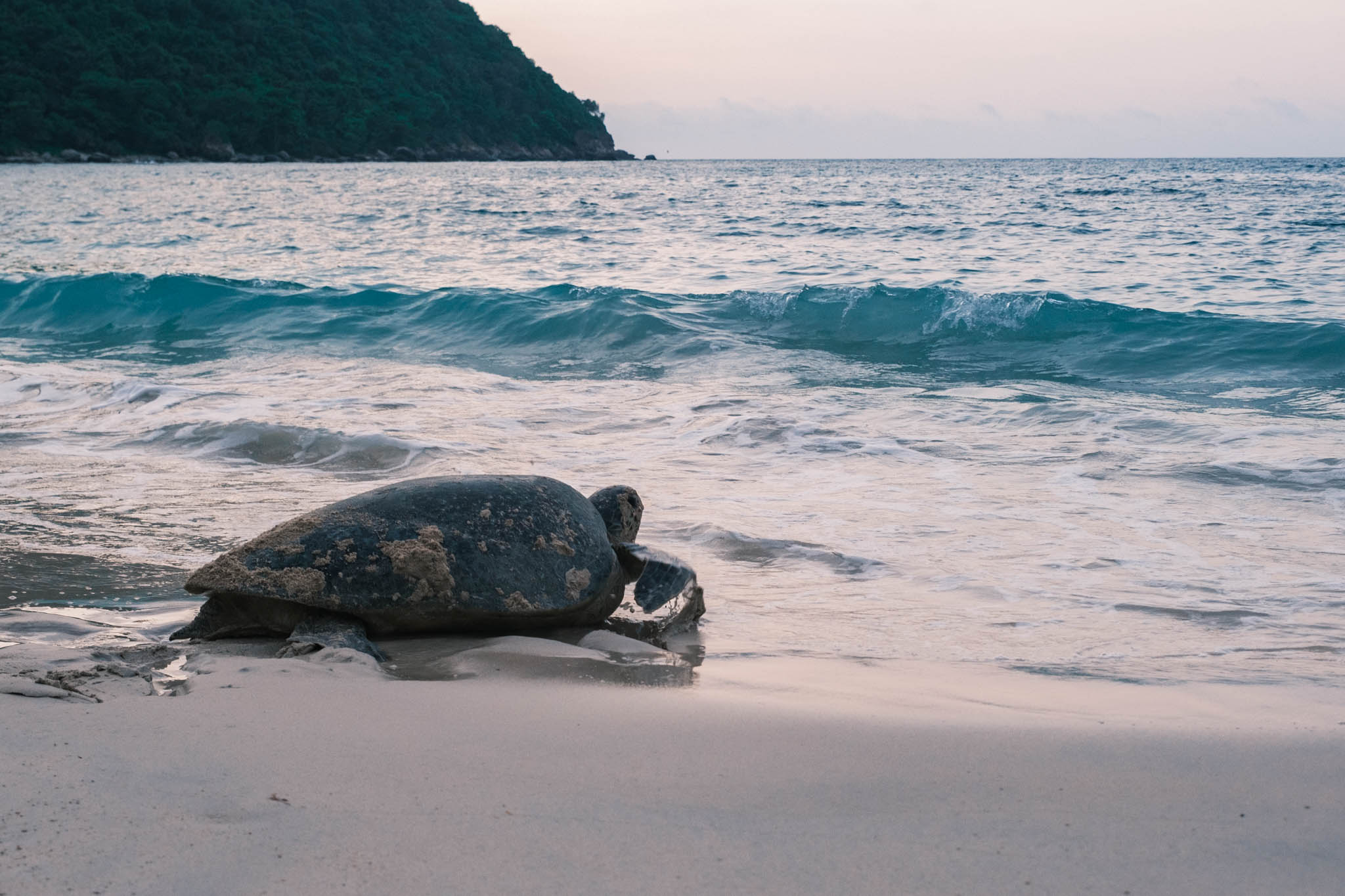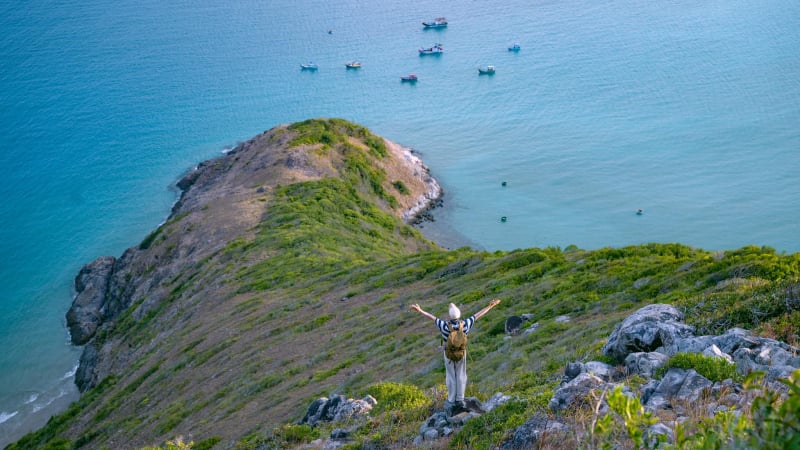Having traveled around Vietnam several times, Tuan saw and realized that Vietnam's nature is beautiful but contains environmental problems that affect the survival of rare wildlife species, especially sea turtles. On his first visit to Con Dao in April 2022, he learned about sea turtle conservation activities here and cherished the plan to participate. After 3 full years, in April this year, Tuan was accepted as a volunteer for the sea turtle conservation program and set off to Con Dao.
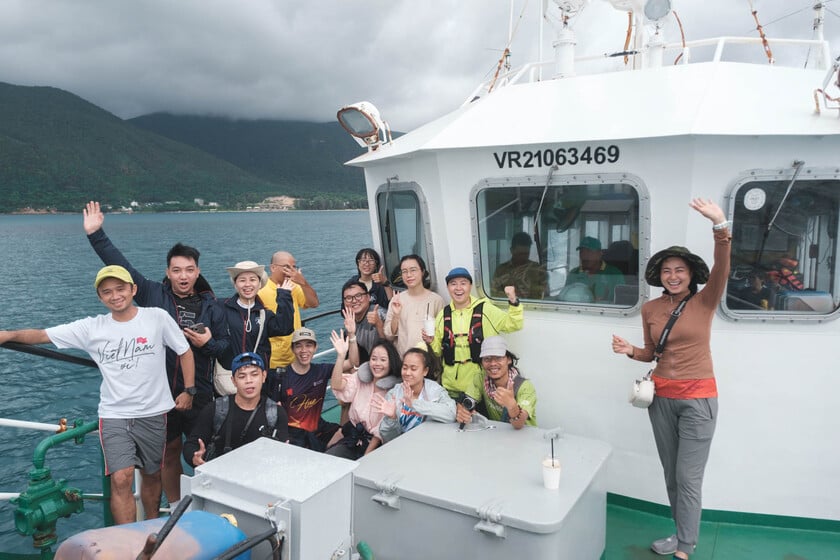
Tuan and other volunteers on their way to Con Dao to participate in the sea turtle conservation program.
Before participating in this activity, Tuan learned a lot more about sea turtles, their habitat, their habits as well as the situation of sea turtles in Vietnam in general and Con Dao in particular.
Con Dao National Park has a total natural area of 19,883.15 hectares, of which the marine conservation area is 14,000 hectares and the buffer zone area on the sea is 20,500 hectares. There are 18 beaches where turtles lay eggs, including green turtles. This is the first place in Vietnam to successfully implement a sea turtle conservation program, with the number of sea turtles laying eggs accounting for over 85% of the number of turtles laying eggs in Vietnam's waters. From April to November every year, more than 600 mother turtles will return to their birthplace to nest and lay eggs, with over 150,000 baby turtles rescued and released into the sea. Con Dao National Park is recognized by the Vietnam Book of Records as the place where the most baby turtles are released into the sea.
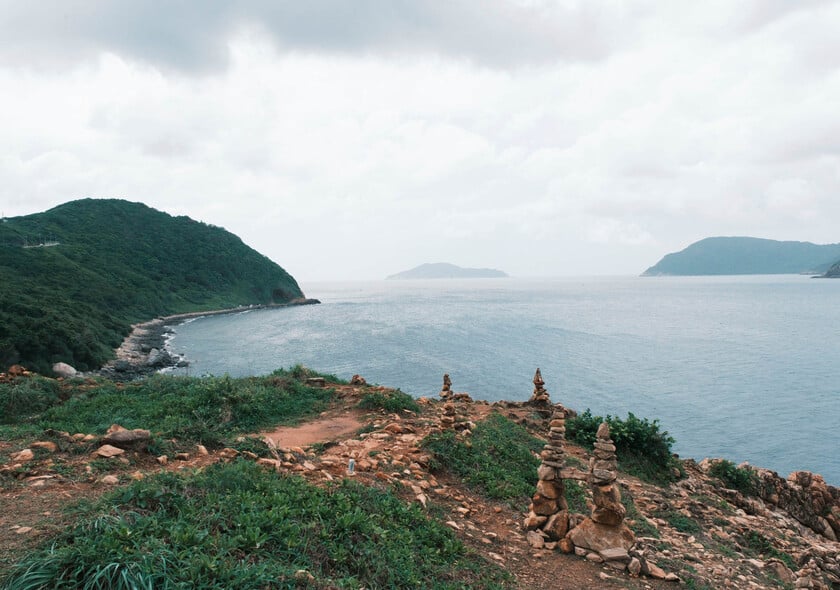
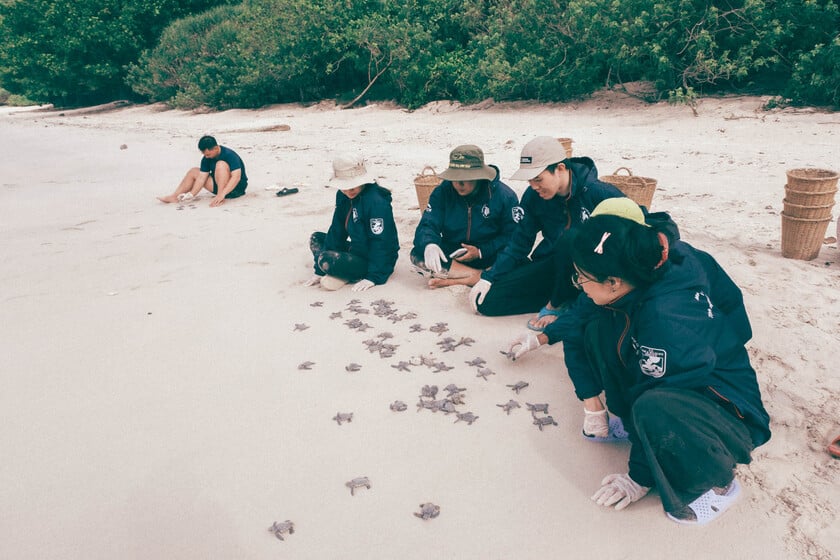
Con Dao National Park is the most successful place for sea turtle conservation in Vietnam.
At 2am, Tuan and a few other volunteers quietly walked along the beach, their bare footprints imprinted on the cool sand. Less than 20 minutes later, a mother turtle crawled ashore from the sea. At that moment, Tuan could only stand still, holding his breath, observing as time seemed to freeze. “Three years of wandering around the country, but no moment has ever moved me as much as this. I am standing before something so great - a symbol of life, of nature that humans cannot possibly create,” Tuan said.
The mother turtle finds a suitable place and quietly uses her two front legs to fan the sand around to create a large hole, then uses her two hind legs to dig the hole and slowly closes her legs and pushes to lay eggs the size of ping pong balls. A mother turtle can lay up to four clutches of eggs in 2-3 weeks, each clutch containing about 70-200 eggs at a time.
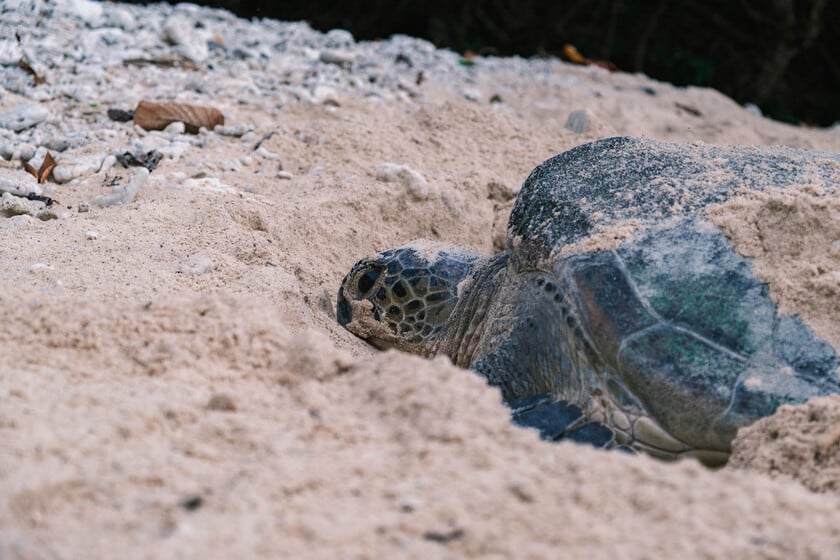

Tuan silently watched the mother turtle lay eggs on the sand.
Waiting for the mother turtle to finish laying eggs, Tuan and the volunteers will use trained professional methods to bring the eggs to the incubation pit, ensuring they can be born safely, increasing the hatching and survival rate of the baby turtles. The incubation pit is prepared with separate "nests", placed in two areas with or without roofs to balance the ratio of male and female turtles. The turtle's gender is determined by the temperature around the nest, temperatures hotter than 29 degrees Celsius will increase the ratio of female turtles. After about 45-60 days, the eggs hatch into baby turtles and are released into the sea.

Volunteers use professional methods to move turtle eggs to the incubation pit.
Sea turtles are usually released early in the morning when the sun is shining. Volunteers stand far away from the shore so that the turtles can orient themselves and remember where they were born, so they can return to lay their eggs later. Volunteers must ensure that they do not interfere with the process of them going to sea: do not touch the baby turtles, do not chase away their natural predators such as sharks and seabirds during this time, and do not make noise.
The scene that impressed Tuan the most was when he released a baby turtle with a "deformity" in its belly back to the sea. Although it had difficulty moving, the turtle did not give up, trying to turn around and roll back and forth, inching its way across the sand. Staying and observing the whole process, the little turtle's strong will to live really moved Tuan: "Although the time it took to get to the sea was 4-5 times longer than other turtles, that turtle never gave up, only turning its heart towards the light and the deep blue ocean out there, even though it did not know if it could live through tomorrow or not."
Or the moment he sat and watched the mother turtle lay eggs and return to the sea at dawn, that scene Tuan could never forget for the rest of his life.
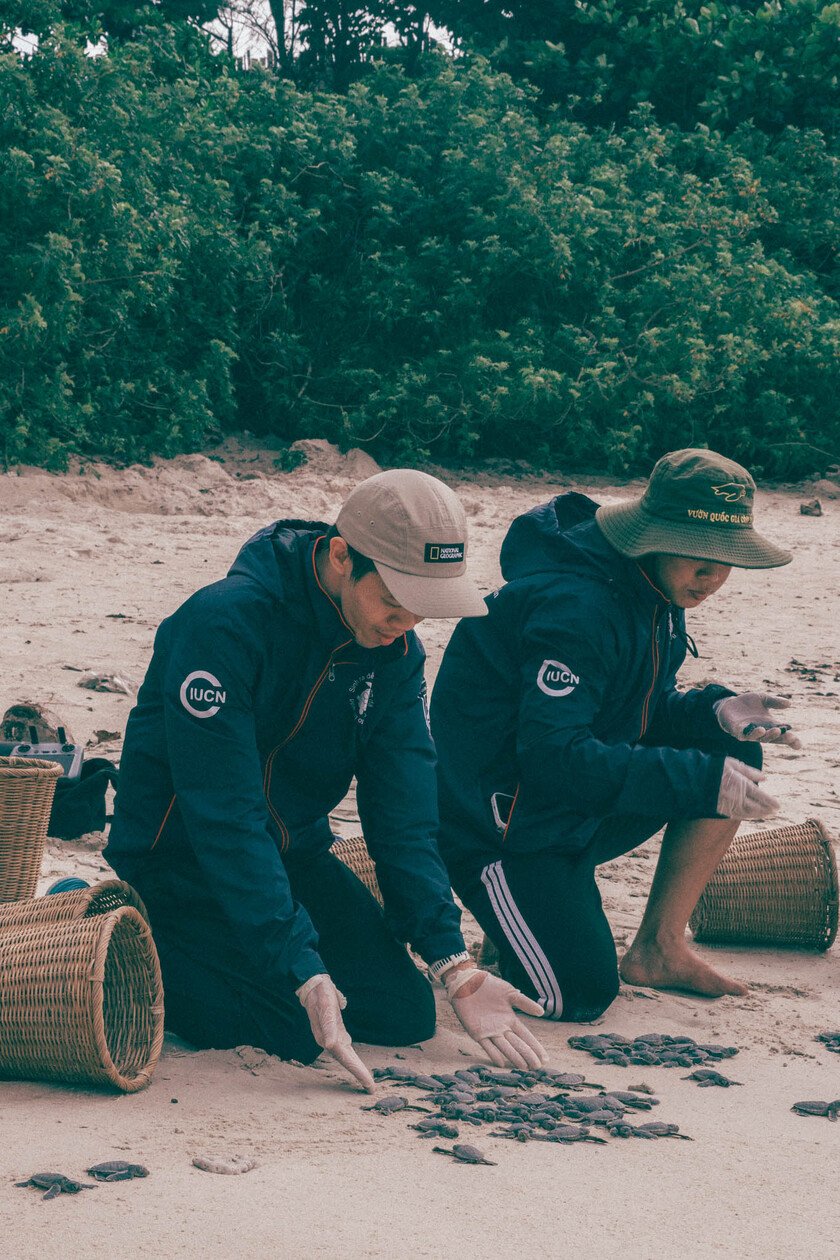
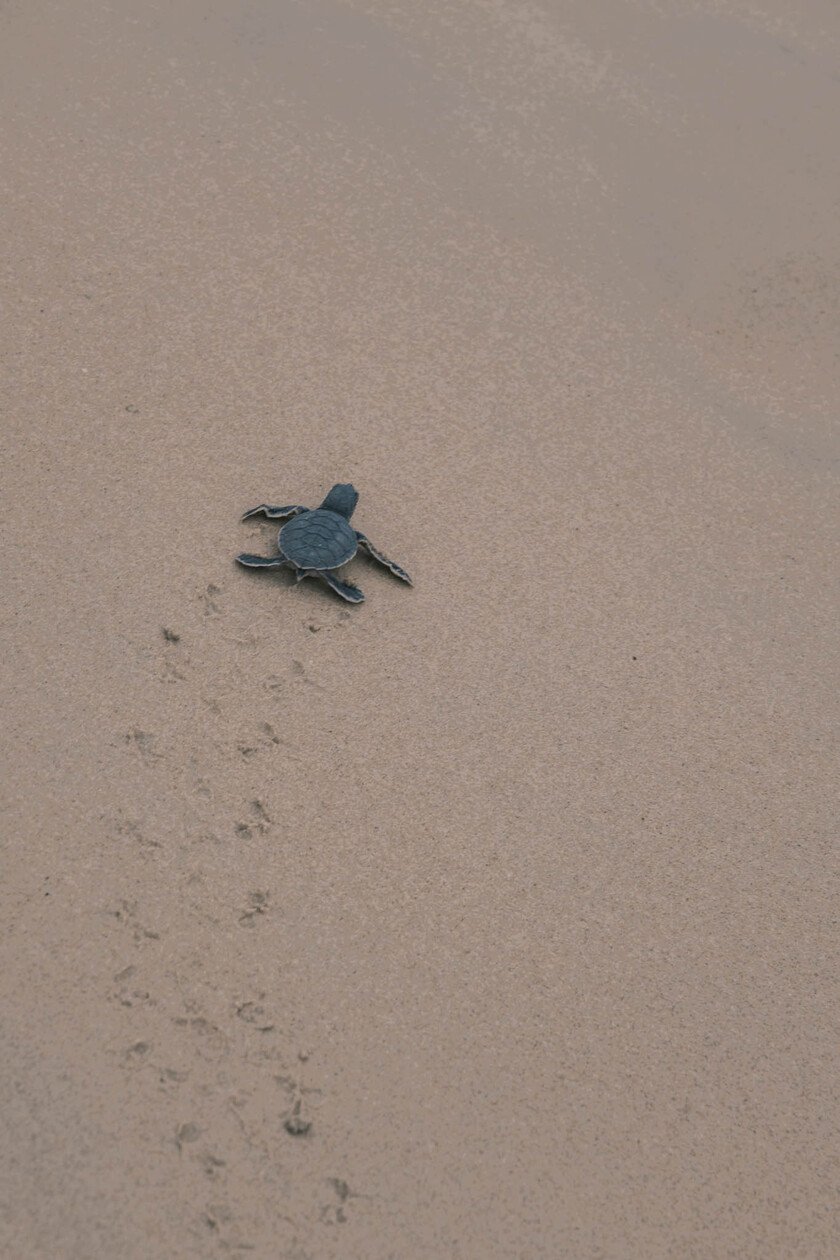

Baby turtles return to the ocean, starting their life cycle on the sandbank in Con Dao.
The sea turtle conservation program implemented by IUCN and Con Dao National Park this year will start from May to August, with a total of 9 batches, each batch accepting 20 volunteers. For those who intend to participate, Tuan advises to register early because the competition rate for each batch is very high. Volunteers need to prepare good health because they often have to stay up late and wake up early, and at the same time equip themselves with knowledge about sea turtles and the marine environment in Con Dao.
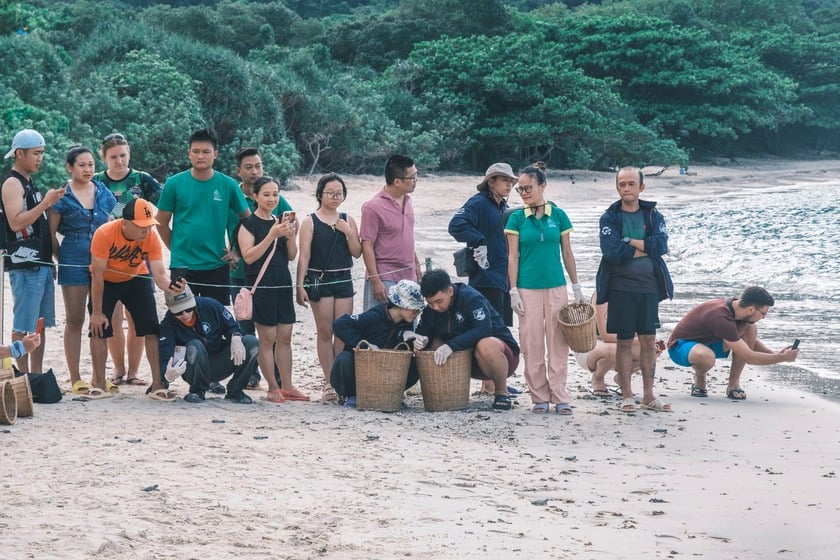

The sea turtle conservation program with the aim of preserving and increasing the number of turtles in the wild received the response and participation of many volunteers and tourists.
Sea turtles are facing extinction due to major threats such as loss of nesting grounds due to human activities, loss of eggs due to predators, overfishing, pollution and marine litter. Every year, only about 300 - 400 mother turtles return to Con Dao to lay eggs, the rate of baby turtles surviving to adulthood is only 1/1000. They often die of dehydration if they do not crawl to the sea quickly enough after hatching or are attacked by other predators.
After his journey to conserve sea turtles, Tuan realized the profound danger that humans bring to them: “Sea turtles - the sacred species of the ocean - are gradually disappearing from the world because of lights, waste, fishing nets and many other things, but the biggest cause is probably still because of us.”






